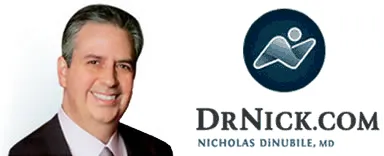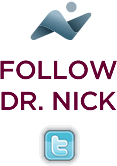Resource Links
Patient Center
Prevention
“A Stitch in Time Saves Nine”
One of the most important goals of Sports Medicine is the prevention of injuries and ailments.
Sports Medicine Physicians have been on the leading edge of the prevention movement. Prevention starts by knowing the athlete or active individual including a preseason or pre-exercise screening exam. By identifying certain problems or issues, injuries can be prevented often with some simple measures. Year-round balanced conditioning is also extremely important.
Prevention Pays – Unfortunately, our nation’s healthcare system is not adequately committed to prevention. We are spending over one trillion dollars annually on healthcare and less than 2% goes towards prevention. That is not a wise investment. Newer technologies, medications, and treatments are more and more expensive and we will never catch up with, or control and tame healthcare spending if we wait for disease or injury to occur before we intervene.
We are more of a health repair system than a health care system.
Earlier intervention with preventive strategies is what we all should be striving for. Also, all too often individuals try to place the full responsibility on health care and health care providers to keep them healthy. Individuals must be responsible for maintaining their health, whenever possible.
This includes the adoption of a healthy lifestyle. The US Department of Health and Human Services, Healthy People 2000, and Healthy People 2010 Projects have been a welcome effort to re-focus our nation and its resources on prevention.
The HP2010 “Be a Healthy Person” has great information for anyone hoping to improve their health through prevention.
Also, the Agency for Healthcare Research and Quality (AHRQ), developed the “Pocket Guide to Good Health in Adults” to help you stay healthy, head to toe.
Dr. DiNubile has served as the national representative for both the American Academy of Orthopedic Surgeons (AAOS) and the American Orthopedic Society for Sports Medicine (AOSSM) to this national project.
HP2000 and HP2010 are akin to a health repair manual for our nation focusing on health promotion and disease prevention for a wide variety of health and disease-related issues.
HP2000/HP2010 involves numerous specific objectives for a wide variety of medical conditions. There are also more specific initiatives focusing on prevention. Musculoskeletal (bone and joint problems) are rapidly on the rise. They are now the #1 reason that people see a doctor in the USA (more than the “common cold”).
The AAOS has developed a wonderful consumer education program, “Prevent Injuries America”, geared toward the prevention of injuries. Also, President Bush officially proclaimed the years 2002-2011 to be “The Bone and Joint Decade”. Many other countries have also stepped aboard this international effort.
Clearly, the prevention and treatment of musculoskeletal disorders should be a priority.
Remember, “an ounce of prevention is worth a pound of cure”– It’s your call, you make the choice!!

